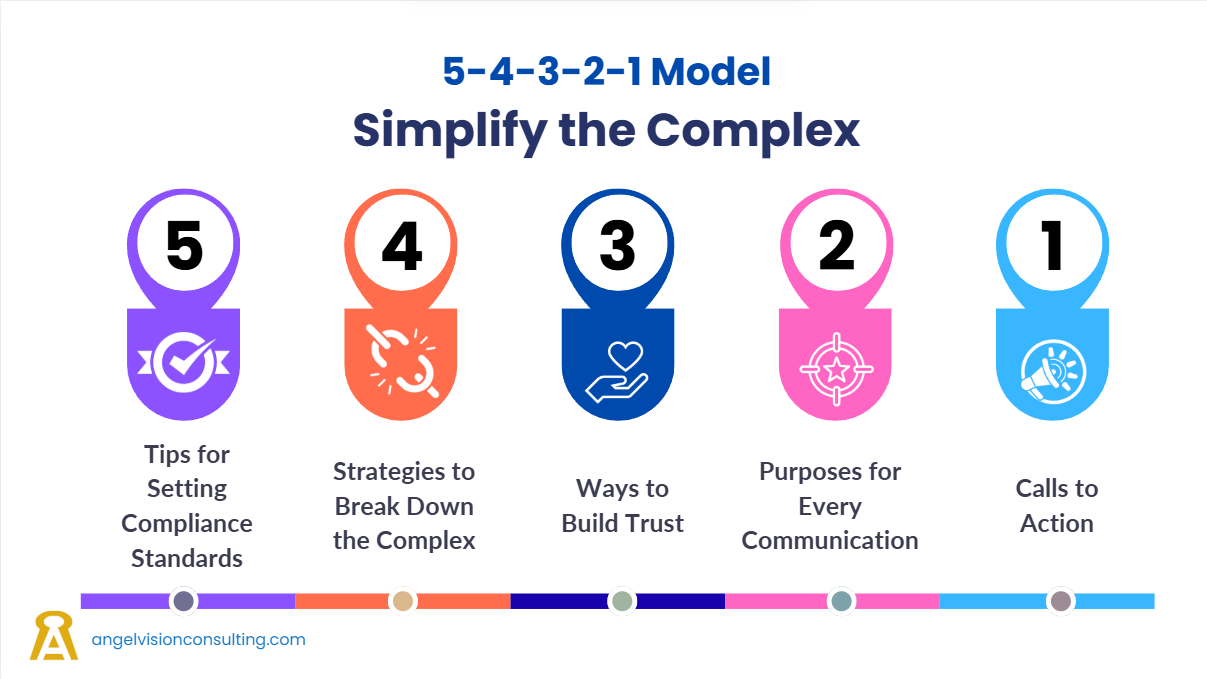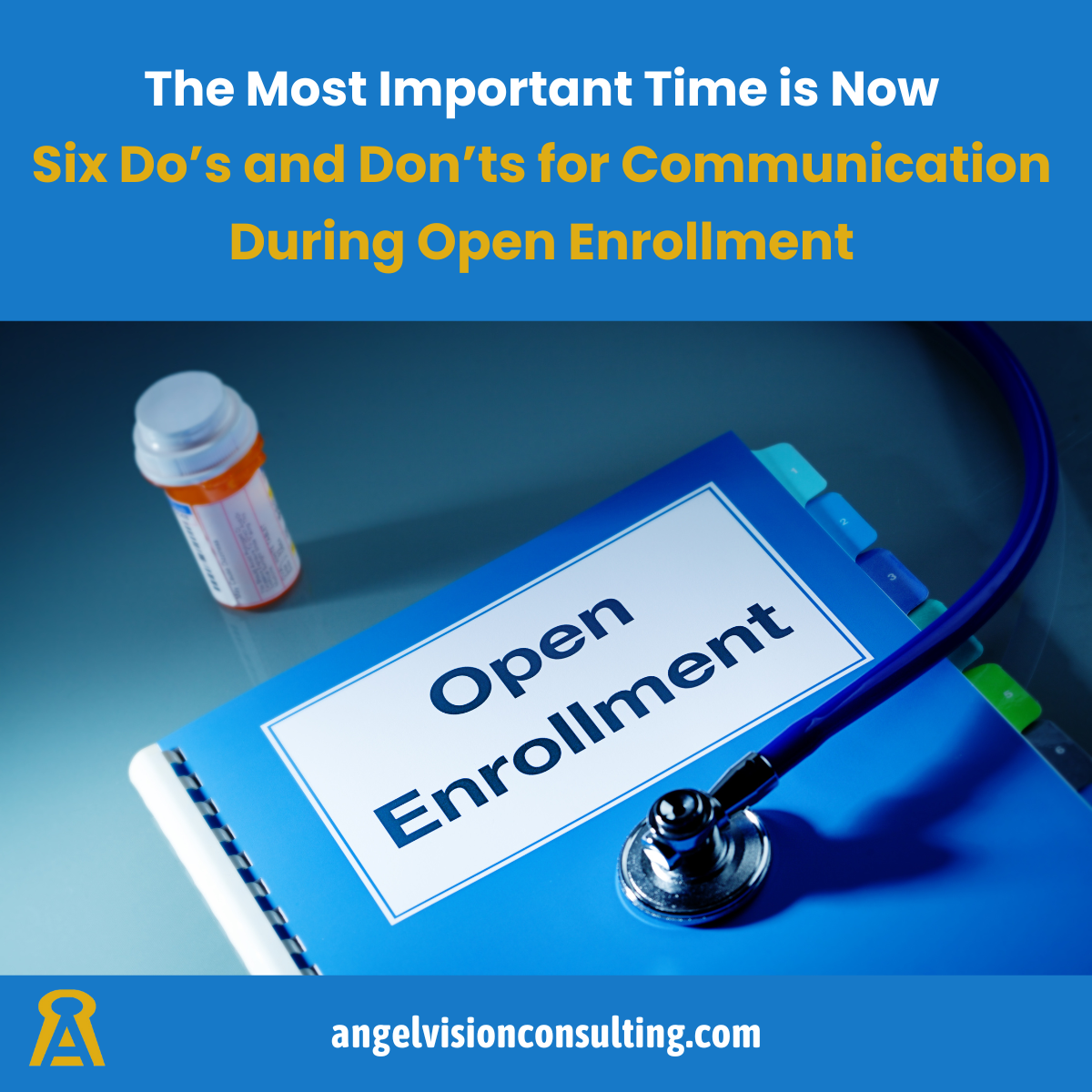5-4-3-2-1 Simplify the Complex: A Guide to Building Trust
Get ready to Simplify the Complex.
In highly regulated industries like benefits and financial services, communications are often complex, require multi-stage approvals and delays seem inevitable. The idea of clear, timely communication can feel out of reach, but what if it didn't have to.
With over 20 years experience at the intersection of benefits and financial services, I saw it all. You had the jargon jungle where communications were stuffed with so many industry-specific words and acronyms, you needed a decoder just to understand the message. Or possibly, the slow-motion approval monster where something newsworthy happens and the need to communicate is identified but weeks (or even months) pass and it is still in-progress or waiting for approval.
I would like to introduce my 5-4-3-2-1 Simplify Model. It is a framework to address the biggest failures organizations face when attempting clear, timely communication. Through this framework, you can restart your communication strategy. Rather than fear complexity and compliance, you can simplify it.

5 Tips for Setting Compliance Standards
Clear, timely communication starts with a strong foundation and shared commitment. When organizations struggle, it’s rarely the message itself—it’s the lack of structure. Without a common framework, everyone ends up playing by their own rulebook.
- Agree to rules of engagement. Effective communication happens when stakeholders are aligned. That means setting shared goals, defining roles, establishing clear processes and expectations, and proactively identifying potential needs.
- Create of library of pre-approved content snippets and disclaimers. Avoid endless back-and-forth by building a content framework that covers common scenarios and frequently used language. This speeds up approvals and ensures consistency.
- Establish a list of do's and don'ts. Knowing what not to say is just as important as knowing what to say. Identifying sensitive language or trigger topics helps prevent unnecessary revisions and keeps messaging on track.
- Set reasonable timelines for review and approval (with escalated reviews for hot/timely topics. Not all communications are equal. Align review timelines with business priorities to keep momentum and avoid bottlenecks—especially when speed matters.
- Don't be afraid to adjust with organizational needs. Every organization is different. Your standards should reflect what works for your team. If something isn’t working, revise it. Flexibility is key to long-term success.
4 Strategies to Breakdown the Complex
When you have been in an industry for a while, you pick-up a new language. It's the words, phrases and acronyms that industry insiders throw around in normal conversation. You likely take for granted that others don't understand the language. There are ways to breakdown the complex and simplify your message so that your audience understands it.
- Step-by-step explanations: Walk readers through processes in small, digestible steps.
- Visual aids: Use charts, timelines, infographics, or diagrams to make data and regulations easier to grasp.
- Plain language: Swap industry jargon for clear, straightforward terms. Limit use of acronyms unless they are widely known.
- Use the “Middle School” test: Imagine explaining your message to a middle schooler. Is it understandable? Do key ideas require more clarity? Are actionable steps clearly defined? Personally, I’ve found it helpful to test communications on my middle school-aged kids—they offer an excellent perspective on whether the message is accessible to a broad audience.
3 Ways to Build Trust
Trust is essential to business growth and success in benefits and financial services. Trust is shaped by three key factors:
- Transparency – Organizations and their employees want clear, jargon-free explanations about their options. Hidden fees, unclear rules, or misleading benefit structures erode confidence.
- Reliability – A consistent, credible voice builds trust over time. You must be available to answer questions and provide accurate, up-to-date information.
- Education – Many organizations and employees underestimate the value of benefits simply because they don’t fully understand them. Proactive education helps them maximize what’s available.
Pro Tip: Many organizations hold off on communicating until they have all the details. You don't have to have all the answers. Don't be afraid to tell them what you know, what you don't know and how you will keep them informed. Not only does this establish transparency and reliability, but it also creates an opportunity to stay in front of your audience.
2 Purposes for Every Communication
Every message should do one of two things: Inform or Inspire Action.
- Inform — Share relevant insights that help your audience understand what’s happening and why it matters to them.
- Inspire Action — Motivate your audience to take the next step, whether it's clicking, registering, or changing behavior.
Make the relevance unmistakable. Tie the message to their world. And whenever possible, leave them with something they can act on.
1 Call to Action
When your purpose is clear, your call to action (CTA) should be too. The right CTA depends on where your audience is in the relationship funnel.
🔹 If you're aiming for conversion, it might be: Buy now. Enroll. Join.
🔹 If you're building trust or offering value, it could be: Download. Learn. Register.
Whether you're driving action or deepening engagement, clarity is key. One purpose. One ask.
Ready to Simplify?
Clear, timely communication isn’t just a nice-to-have—it’s a competitive advantage, especially in regulated industries where trust and precision matter most.
The 5-4-3-2-1 Simplify Model isn’t just theory. It’s a practical framework designed to help teams cut through complexity, align faster, and communicate with confidence.
Curious how it could work for your organization? Let’s connect. I’d love to explore how you can put this framework into practice and turn communication into a strategic asset.


